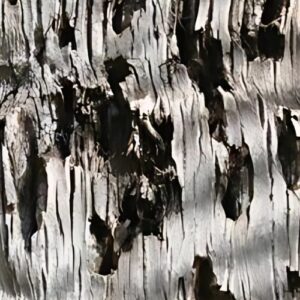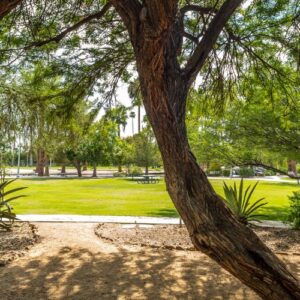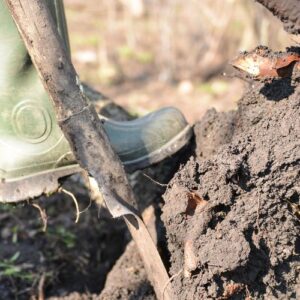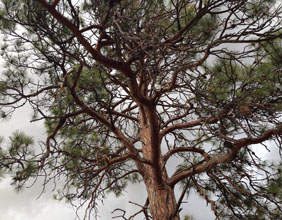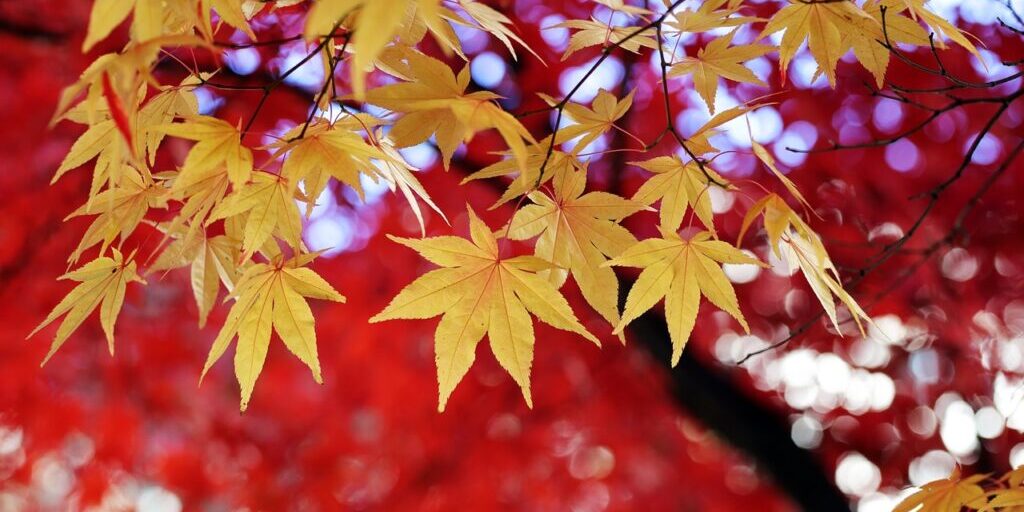
Every autumn, leaves throughout much of the country change from green into brilliant hues of red, orange, yellow, or burgundy. In the Phoenix area, our low desert climate means that the vibrant fall colors found in cooler climates aren’t as common. But that doesn’t mean we don’t have any bright autumn leaves to admire!
When do leaves change color in the Phoenix area?
While Northern Arizona, with its higher elevation, sees leaves change color during the actual fall season, here in Phoenix the colors change a bit later in the year. It’s not uncommon to see falling leaves next to outdoor Christmas decorations or to see spots of colorful foliage after the new year arrives. While not all trees in our area have leaves that change color, the bright pop of yellow or orange next to our native plants is usually a noticeable change.
Look for leaves to change color in the Phoenix and Anthem areas anytime between November and February, depending on drought conditions, weather, and temperature.
Why do leaves change color?
The change from summer to fall leaf color isn’t caused by any single thing. Instead, it’s due to a combination of factors, each of which influences the timing and color of a tree’s autumn leaf change.
1. Shorter Days/Increased Darkness
Despite (most of) Arizona not participating in Daylight Savings Time, the nights still get longer during the fall and winter months – until winter solstice. As we mentioned in our article about landscape lighting, the amount of daylight gives signals to plants and trees. Longer nights signal to some deciduous trees to slow down photosynthesis and the production of chlorophyll.
Additionally, the increased length of darkness tells trees to start growing cells where the leaf meets the stem. This is called the abscission layer, and it blocks minerals and nutrients from reaching the leaves.
2. The “True Colors” of Leaves
For yellow and orange-colored trees, leaves don’t so much change color as reveal their true colors. For most of the year, green chlorophyll produced through photosynthesis covers the actual pigment of the leaves – usually yellows and oranges.
For red or purple-hued leaves, the color is produced by sugars in the leaves that are activated much in the way that the abscission layer is activated.
To use technical terms, carotenoids give leaves an orange pigment, xanthophylls produce a yellow tinge, and anthocyanins are responsible for the red and purple hues.
3. Weather Determines Whether (and When) Leaves Change Color
Weather conditions are the final ingredient for leaves that change color. One of the reasons that we see leaves change so much later in the year is because night temperatures need to drop, while the days need to remain sunny.
Drought can affect leaf color as well. A prolonged drought, for instance, will cause the abscission layer to develop much earlier and leaves will drop before any color change can happen.
Moisture, sunlight, and temperature can vary greatly from year to year in the Phoenix area. That’s why a tree that changes color in November one year may not change until January the next – or may not show any colorful foliage at all.
Which trees in the Phoenix area have leaves that change color in fall?
Several non-native trees will change color in fall, along with these common local trees:
- Arizona sycamore
- Black walnut
- Honey locust
- Arizona ash
- Pomegranate
- Soapberry
- Cottonwood
What if my leaves are turning brown or yellow during other times of year?
Extended drought in Arizona has led to drought stress in many trees, causing leaves to become scorched and dried out. If your leaves are changing color in summer or early fall, it may be due to drought stress. It could also be due to salt damage or even improper fertilization.
Learn more about what to do if your leaves dry out or turn brown in this blog post.
Where in Arizona can I see fall leaf colors during the fall season?
- Anywhere with a higher elevation will see fall color changes on trees such as aspens and gambel oaks.
- The White Mountains will be some of the first areas in the state to see the leaves change (usually early October).
- Flagstaff can see fall colors anywhere from September through November, depending on the weather and when snow begins to fall. Check out the Flagstaff “Leaf-ometer” for more details.
- Sedona offers trees with yellow leaves against a red rock backdrop. It’s pretty amazing!
- While trees may not be the main attraction, the North Rim of the Grand Canyon has its fair share of fall leaves. It closes once snow falls, so plan your trip with that in mind.
- Oak Creek Canyon is one of the few places nearby to spot colorful maple trees.
- Boyce Thompson Arboretum is closer to the Phoenix area, and the leaves should change there around mid-to-late November.
- Want to see fall leaves without leaving the house? Check out these SnowBowl webcams or this one from Sunrise Ski Park.
In Conclusion
While fall in the Phoenix area looks very different than other parts of the country, we do get to enjoy some changing leaf colors – it’s just a little bit later in the year. Look for the colors to begin to change in late November and continue through January, depending on things like drought status, temperatures, and amount of sunshine during the day.
If you’re craving the colors of a “typical” fall, a quick trip to Northern Arizona earlier in the season can surround you with plenty of fall leaves. Or check out the webcams during early fall if you want to view the changing leaves without making a trip.
We hope this article has inspired you to take more notice of the changing leaves – though they may be less common here. If you’d like to add more fall color to your own yard, give us a call. We can recommend the best trees for your property and plant them for you. Autumn is a great time to plant trees in the Phoenix area!
More Articles Like This

Titan Tree Care is a full-service tree care company located in Anthem, AZ and serving all of North Phoenix. We offer a wide range of services to meet your tree care needs, including tree and palm trimming, tree pruning, tree removal, stump grinding, and more. We also offer insect or disease treatments and fertilization services. We are dedicated to providing high-quality, safe, and effective tree care services to our customers and work hard to ensure that your trees are healthy and look their best.





